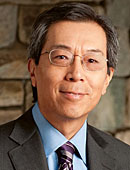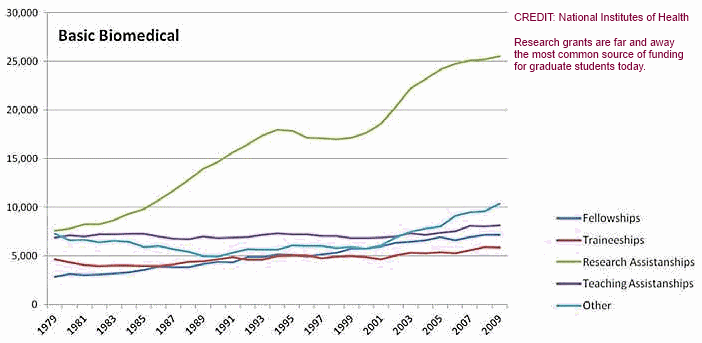
Professor Shirley Tilghman
President Princeton
Too Many Postdocs?
Too Few Research Associates?

Professor Robert Tjian
President HHMI
|
Editorial
- 30 September 2012 |
|
Professor Shirley Tilghman |
Too Many Graduate Students? Too Many Postdocs? Too Few Research Associates? |
Professor Robert Tjian President HHMI |
This past June a US National Institutes of Health (NIH) panel co-chaired by Princeton University's president, Shirley Tilghman, released the executive summary§ to its draft report on its assessment of the "Biomedical Workforce"*, and now the president of the Howard Hughes Medical Institute (HHMI), Robert Tjian, in his "letter" published in the Fall'12 issue of the HHMI Bulletin writes on "Stabilizing Forces".
Among the recommendations made by the NIH panel:
To ensure that all graduate students supported by the NIH receive excellent training, NIH should increase the proportion of graduate students supported by training grants and fellowships compared to those supported by research project grants, without increasing the overall number of graduate student positions.
To encourage larger numbers of PhD graduates to move rapidly into permanent research positions, NIH should double the number of Pathway to Independence (K99/R00) awards, and shorten the eligibility period for applying to this program from the 5 years to 3 years of postdoctoral experience.
NIH also should double the number of the NIH Director’s Early Independence awards to facilitate the “skip-the-postdoc” career path for those who are ready immediately after graduate school.

The panel concluded its executive summary "The working group is aware that similar recommendations have been made in the past by other groups that studied the biomedical research workforce. Many of those recommendations were not implemented, in part because of funding constraints and in part because of resistance from the scientific community. Therefore, the working group urges NIH to provide the funds necessary to implement these recommendations and encourages institutions to work with NIH on the implementation."
To sum up the panel's assessment in a phrase there is an "overabundance in biomedical research of trainees for academic posts".
In the HHMI Bulletin Professor Tjian addresses another aspect of what might be termed the glut of postdocs (and graduate students) from the viewpoint of academic positions available.
In research labs, graduate students and postdocs are transient. It’s the nature of the system. They float in and out at a pretty rapid clip, moving on after about four to six years. On one hand, having that ebb and flow of trainees is good—essential even—as it’s a driving force for innovation and creativity. But at the same time, you need a core group to serve as the institutional memory of the lab, people who understand how we got where we are and why we are doing things a certain way—the progression, if you will.
If a postdoc who develops a new methodology leaves, the lab head can feel like he or she has to start over again. That information can get lost if there is a gap between postdocs. With a few key long-term people in place, however, the postdoc can transfer that knowledge and expertise to them. And these staff scientists are very high level, many with a master’s, a Ph.D., and often even postdoctoral experience themselves... In my own lab at the University of California, Berkeley, there are a handful of people without whom the lab would not function.
Recognizing the role of research professionals in today’s laboratory organizations is important not only to the individuals who contribute their services but also to the research enterprise as a whole. To that end, it is notable that the National Institutes of Health (NIH) has just released its “Biomedical Research Workforce Working Group Draft Report,” which makes recommendations for actions that NIH should take to support a future sustainable biomedical research infrastructure... The message is clear: these professional scientists are remarkably valuable to the progress of research. They are not looking for a fancy title or a bookshelf of awards—that’s not their motivation. They are no less effective as scientists; they’re just a different kind of scientist.
But whether the advice from Professors Tilghman and Tjian is heeded by the funders of publicly funded academic scientific research in the United States, Australia or elsewhere is a moot question. For the moment the debate will continue as to the over use of graduate assistantships to hire aspiring graduate students to serve as technicians on grant-funded projects designated by principal investigators.
____________________________________
§ See: Can NIH Renovate the Biomedical Workforce? And for a UK perspective click here.
*So far as I know the final report is yet to be released (September 29, 2012)
Alex Reisner
The Funneled Web